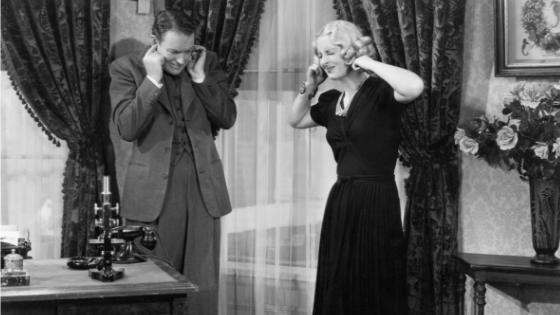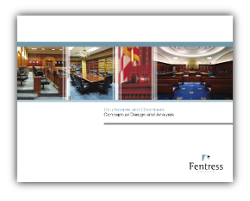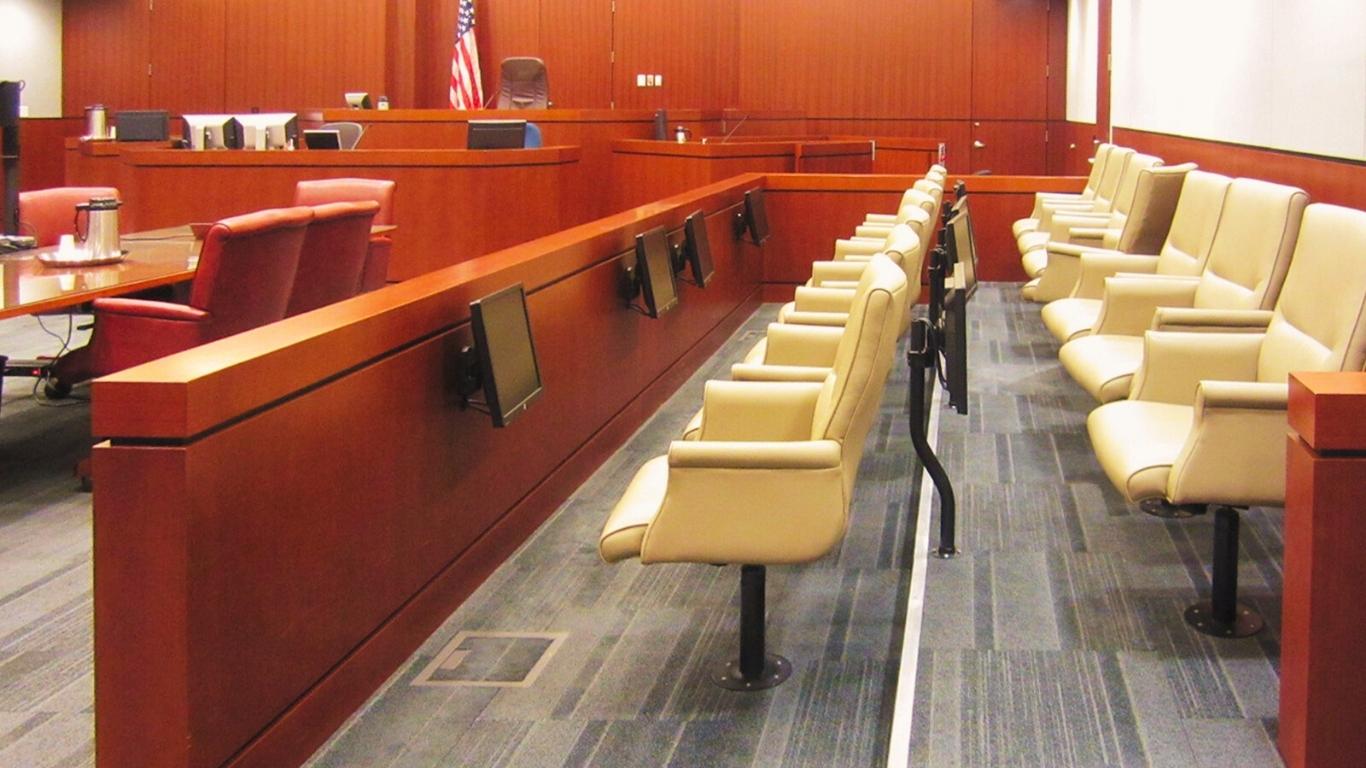External noise during court proceedings is a problem in many courtrooms. These noise issues are not simply an annoyance but can be highly distracting to the proceedings and detrimental to the judicial process.
In one courtroom I visited, every time the HVAC system turned on, the judge had to increase the audio system's volume. When the HVAC system turned off, if the judge forgot to turn the volume down, the voices of courtroom participants were startlingly loud. In another courtroom, trucks traveling on the road next to the courthouse sounded like they were driving straight through the courtroom, or the sound of a train whistle permeated the proceedings. The most awkward situation I witnessed was a courtroom adjacent to a public bathroom. The plumbing system made loud whooshing and clanging noises whenever someone flushed the toilet. Participants and spectators became distracted by the constant sound, and many even laughed, further distracting them from the proceedings.
Sources of auditory distraction may include external noises transmitted through:
- Perimeter walls of the courtroom, including exterior walls and walls abutting other interior spaces such as the jury deliberation room
- Public access doors
- Prisoner access doors that lack sound locks
- Older, single-pane windows
- HVAC equipment and plumbing, or through HVAC ductwork serving the courtroom
Audio transmission technology can improve upon some of these deficiencies but will only partially eliminate the distractions. The following are potential solutions to some of the most common external noise problems.
External Noise Solutions
Blocking the transmission of sound in both directions is extremely important to prevent interference with courtroom proceedings and ensure the proceedings' privacy. This includes blocking sound through exterior courtroom walls, interior partitions, ceilings, windows, doors, plumbing and electrical penetrations, and HVAC ductwork. Desirable standards for accomplishing these acoustic goals are classified as Noise Criteria (NC), which is an international standard of measurement for background noise levels within a space such as a courtroom or in adjacent space, and Noise Isolation Class (NIC) or Sound Transmission Class (STC), which are used for rating the acoustic permeability of partitions – i.e., how much sound travels through a wall of a given design.
Sound leaks at penetrations or the perimeter walls may be one source of acoustic problems. However, a low NIC rating of interior partition walls is usually the primary acoustic concern in a courtroom. Solutions to this problem require improvements to be made directly to the walls. This may include the complete replacement of the low NIC-rated existing walls or the addition of sound-insulating materials to the existing walls.
New or added sound-rated walls should be extended from floor to floor, preferably with staggered studs, as shown in the accompanying schematic wall section below. The thickness of the insulation and drywall will vary depending on the level of NIC rating needed to solve the external noise permeability problem.

NIC-rated wall section
However, not all external sound issues can be solved by adding insulation. Two other sources of external noise recently came to my attention when conducting courthouse assessments. Each of these more unique situations requires a solution beyond insulation.
Metal Roof - Sunlight and Raindrops
The first was a courtroom in Florida that was on the top floor of the building, directly beneath the roof. The roof of this courtroom extended above the rest of the roof, which is a standard method for giving the courtroom additional interior height. However, the roofing material covering the courtroom was metal. This metal roof made loud popping and banging noises when expanding or contracting due to changes in sunlight (described to me as the sound of a child throwing a baseball against the siding of a house). The large raindrops familiar to the tropical weather of South Florida made a rapid staccato drumming as they hit the metal roof.

The metal roof above a courtroom
You may be thinking that metal is a poor choice for a roof. However, the interior spaces under a metal roof need not be louder than other roofing materials if special care is taken, such as allowing for the expansion and contraction of the metal and proper insulation below the roof. Before installing a metal roof, please ensure that the architect and roofing contractor have experience properly installing metal roofs to reduce roof popping and isolate the interior spaces from sound transmission.
The Sounds of Fitness
The other recent example was a courtroom with a fitness room directly above it. While it is an excellent employee benefit to have a fitness room in the building, careful consideration should be given to the location of the space relative to quiet spaces in the courthouse, such as courtrooms and chambers.
In this case, the clanging sounds of weights from fitness machines and even the sounds of footfalls from people doing aerobics were a noticeable distraction to the proceedings in the courtroom below. The courtroom ceiling was insulated, but the sound continued to be enough distraction that the fitness room could not be used for many activities while the courtroom was in session.
A better solution would have been to locate the fitness room elsewhere. Problems like this and the flushing toilet described above could have been avoided entirely if greater consideration had been given during the courthouse's design phase.
Sound Solutions
Careful consideration of where to locate noisy areas, such as bathrooms and exercise rooms, will keep you ahead of the game regarding noise reduction. If it makes noise, could you move it away from the courtroom? But if noise-making facilities can’t be relocated, there are options to reduce and eliminate distractions. Using noise-dampening materials can significantly reduce or eliminate unwanted sounds. Insulation and sound-absorbing voids can also be added to the interior structure. There are many sound solutions.
An earlier draft of this post was published in July 2014 by a different author and has been refreshed and updated with new information.
_________________________________________________________
Click the image to download our Courtrooms and Chambers: Conceptual Design and Analysis eBook.






















